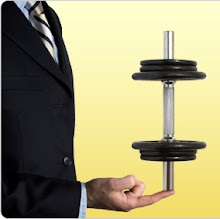WHO CARES!!! When it comes to marketing.
Color plays a pivotal role in a website's impact, and as such must becarefully considered. This is especially crucial when the site inquestion is used for business/professional purposes. Before delving into the specifics of color selection for your gym's websites, here are a few general rules for color usage in websites:- Don't use yellow for web page backgrounds - it causes eyestrain- Avoid black backgrounds - these essentially limit text color choice to white and yellow, which can look garish and hard on the eyes against black- If in doubt, use black text on white background - while not very original, this color combination ensures optimal readability. In any case, choose a text color that constrasts with your background; this is usually best achieved with dark text on a light background.- Choose from the 216 "browser-safe" colors, codes for which can be found at <>. If you stray outside these standard colors, your website colors may be distorted on some users'systems.With that quick primer behind us, let's talk business websites.To lend a professional, organic appearance to your website, your best bet is to choose a simple palette of a few matching colors. AdvancedMedia Productions suggests limiting yourself to three colors, andusing these colors strategically to group related objects or indicaterelationships between objects or segments of the page(http://www.boston-website-design.com/web-design-strategy.html). TheBuildStar Business Builder's Network(http://www.ibuildstar.com/colors.htm) has a similar philosophy,urging the business website designer to "create an identity through all your marketing and products with one or two colors you use over and over. This is a very basic and effective way to tie all your stuff together in the minds of customers."If you're not good at color coordinating, it's a good idea to consult a color wheel such as that found at http://www.visibone.com/colorlab. Complementary colors (that is, those found directly across fromeach other on the color wheel - e.g. red and green) are safe choices,as are neighboring shades. Which of these you choose, however, depends on what mood you choose to evoke - the contrast of complementary colors like orange and blue suggests excitement, while neighboring colors like green and blue suggest unity and harmony.According to one website, using different shades of the same color,called the monolithic approach, is the superior choice for professional website color schemes. The writer asserts that "single colors or Monoliths work best for business sites because of their more subtle suggestion," but cautions that this approach can be boring if overdone and may require "adding a contrasting black [to make] thecolor combo monochromatic and more interesting."(http://createafreewebsite.net/website_workshop/choosing_colors.html). But how do you choose the best starting color to work from? An important consideration in choosing the foundation color for your website is the emotional association it typically carries. While these associations can vary somewhat from culture to culture, they generally hold true for the majority of people. Here's a quick snapshot:Red: Daring, persuasive. Also hard on the eyes. Red is especiallyeffective in highlighting key text on black and white sites, and also works to liven up browns and tans.Blue: Suggests quality, trustworthiness, success, seriousness,calmness. A common choice for sales pages. In "What is the color ofyour website?", Andrew Lapointe suggests highlighting phrases like"Our history" or "Our mission statement" in blue(http://www.dotfactor.com/artman/publish/marketing_31.shtml). Lapointealso suggests avoiding purple, which connotes uncertainty andambiguity, and only using yellow to highlight key words and phrases.Pam Renovato, in "The Psychology of Color and Internet Marketing"(http://www.webmasterstop.com/articles/choose-website-colors.shtml),has some interesting comments on the use of grays and browns:"They suggest weight, or something heavy. This would provide yourvisitors with a feeling of stableness and strength. Emotions like thiswill help your visitors to associate your site with solidity andconfidence. Other colors such as burgundy, oyster, beige, blues willalso provide a feeling of solidity."Another important factor is the age of the target audience. Neutraltones work best with sites designed for an older audience, the targetdemographic for many business websites. You'll obviously also want toselect shades appropriate to your business, if any - as Ralph Hilliard points out in "How to choose your web site colors"(http://www.prowebsitemanagement.com/articles/websitecolors.html), a web designer who creates a black and green website for the Red Crosswill be out of business quickly. Hillard further stresses theimportance of color selection in marketing:"The BEST color for selling is the color that captures your primary audience emotionally," he posits. "If my audience is new mothers andI'm selling baby clothes, I guarantee you I can sell more clothes withsoft pinks, blues and purples than I could using bright reds, greensor black."When it comes down to it, choosing a professional website color schemeis as simple as the common sense guideline provided at the 1stsitefreeDesign tutorial (http://www.1stsitefree.com/design_colors.htm): "Use colors that compliment your subject matter and are relatively pleasing to the eye."It seems, then, that classic, rich, conservative, "serious" colors like blues, browns, burgundies and grays are your best bets for business websites.On a final note, however, there's always an exception that breaks allthe rules; according to "Website Colors That Sell" at the BuildStarBusiness Builder's Network (http://www.ibuildstar.com/colors.htm),"one study showed that the color combination with the most powerfulpsychological effect was yellow title, white text, on a dark blue background."Here's a final link for you:Cobalt Multimedia - Choosing colors for your website<>
Labels: Advertising, Gym Marketing, Health Club, Marketing

0 comments:
Post a Comment